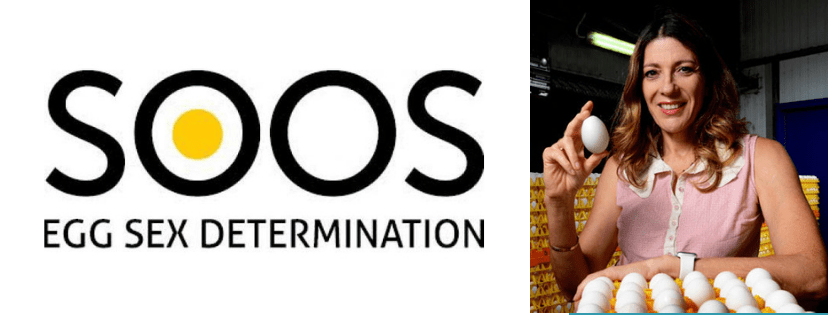#How to generate buzz in a buzzless industry

Table of Contents
“#How to generate buzz in a buzzless industry”
Now, what if your solution is so niche, that only a small portion of the population will ever use it? Add to that solutions that are so heavy in scientific research that only someone with a PhD understands how they work.
Sound familiar? Not to worry.
We scoured X-Europe’s startup accelerator program to find the best examples of startups that, despite the challenge of having an extremely niche solution, are finding ways to get the attention they need.
In the end, we spoke with one poultry sex reassignment startup, one data analysis company specialized in crop science and metagenomics, and one smart beehive maker. It can’t get any more niche than that.
Here’s what they had to say:
Focus on the wider impact your industry has on society

No matter what industry you’re working in, there will always be something that makes it interesting for a wider audience. Your best bet is to look at the big picture. How do developments within your industry impact people in their daily lives? How do they impact the causes or issues they care about?
With a very specific customer base (farmers, governments, and others working in the agricultural sector), AgriTech hasn’t always been the sexiest industry. The potentially low public interest and readership levels meant that, in the past, journalists weren’t necessarily clamoring to cover new industry developments.
Computomics, a data analysis company that offers custom services for next-gen sequencing projects from crop science to metagenomics, knows this all too well.
But as Managing Director, Dr. Sebastian J. Schultheiss, told Growth Quarters, growing public consciousness about the effects of climate change, food security, and the conversation around sustainability have completely changed this perception.
By 2050, our planet will be home to more than ten billion people, resulting in an estimated 50% increase in the amount of food, feed, and biofuel required. Farmers around the world were producing 30 million tons less grain than required to feed everyone in 2019. As the world population grows, the demand for agriculture is increasing. This puts pressure on farmers, growers, agricultural companies, and food producers to supply more, and to supply faster. The pressure is aggravated by the global effects of a changing climate on food production worldwide.
At the same time, the technological advances are huge! A farmer 10 years ago worked in a completely different way than they do today. Today’s agriculture uses numerous sophisticated technologies such as robots, sensors for temperatures and soils, aerial images from drones and satellites, and GPS technology. Using these advanced devices, in combination with machine learning technologies, allows farmers to be more profitable, efficient, safer, and more environmentally friendly. Having all these challenges in mind, you just have to get excited about innovation in this sector!
Simplify complex solutions by focusing on added value

Now imagine that you’re not only operating in a niche sector but also have a niche solution within that sector.
For Yael Alter, CEO of egg sex determination startup Soos, this was a big challenge.
“There are difficulties in growing while associated with the AgriTech sector. Solutions are complex and heavily dependent on science which requires intense research and the industry demands a 100% complete product before going to market,” Alter explains.
“In addition, these solutions are usually restricted with heavy regulation and require mass amounts of capital to fund. The biggest difficulty is being in the livestock sector, as the number of investors interested in animal husbandry is substantially lower.”
Soos’ groundbreaking technology makes it possible to determine and change the sex of eggs before they hatch. But why should anybody not working in the poultry industry care about such a niche and technically complex solution?
Alter laid it out in a way that’s straightforward, easy to understand, and easy to remember.
“We manage to get people excited about our product via the noticeable benefits our solution provides. Here is an example of a term we coined, ‘The 4 P‘s’, showing our added value:”
- Poultry – Our solution has an obvious animal welfare benefit which is saving male chicks from culling. Every year, 7.5 billion male chicks are killed just after hatching.
- Planet – Today, the industry expends many resources such as electricity, water, feed, etc., that are wasted due to the production of male chicks. With our technology, these resources won’t be used in vain due to the production of more female chicks.
- People – With a growing population and nutritional security a rising issue, our solution will be able to increase egg supply, thus providing a valuable source of protein, especially in developing countries. The human population is estimated to reach 10 billion by 2050 and it is our duty to plan ahead for sustainable production and nutritional security for the next generation.
- Profit – The egg market is currently marked at $220 billion. The male-chick culling practice is the industry’s largest pain point as they have a 50% capacity loss and additional expenses that are associated with the culling and regulation. Our solution can provide an estimated $1.5-$2 of added value for every male that is altered to a functional female. This means that our solution can add up to $15 billion of value.
Consider how your product advances a particular tech sector
Of course, not every solution will have such a clear and direct social impact. Instead, consider how your product fits within the current tech trends. As Schultheiss explained:
The attention around everything AI has helped us get conversations started. For example, we are currently investigating the use of Earth Observation data to include in our technology. There is so much diverse data available in AgriTech and many people don’t know how to use it in a successful and meaningful way.
We developed our technology so it integrates diverse datasets, extracts the most useful and discerning features, and fully leverages the information available in these datasets in a meaningful way, to deliver actionable insights.
Alter agreed:
Our startup is at the junction between AgriTech, FoodTech, and Biotechnology. This certainly has allowed us some flexibility on how we frame our solution for specific audiences. Our technology also has many aspects that allow for the use of buzzwords when needed such as IoT, AI/ML, Big Data, SW, HW, etc.
Each startup should consider how they can use their product to their strengths. Some investors might be able to overlook the non-buzz aspects if you can create buzz through your technology, market, team, etc.
Choose the right outlets
Consider what your goals are. While making it into a top-tier publication may seem glamorous, if your goal is lead generation, reaching a global audience may not be worth the effort. As Alter told Growth Quarters:
“We’ve found that staying true to your niche is very important,” Alter tells Growth Quarters. “You would be surprised by how specific some niche outlets can be. The specificity doesn’t stop just at agriculture or even livestock, but we have various poultry/chicken media outlets and conferences/events. This allows us to reach our consumers without having to go after very general events/outlets.”
“With that being said, we still believe that you need to spread your efforts to reach a more general audience. While looking for poultry farms to adopt your solution, a niche poultry magazine would probably be your best bet, but not so much if you’re looking for investment for example. Our PR and Business Development team try to find the right balance of effort allocation between niche and non-niche outlets,” says Alter.
Soos itself has been able to get coverage in both Poultry World and The Guardian. Alter shared that the key is knowing what types of stories to pitch to different publications. While the readers of Poultry World may want the nitty-gritty details behind their solution, a wider audience will be more interested in the impact it has:
Each startup should map out their focuses and see what works for them. When spreading out to more general audiences, our efforts are accompanied by finding and emphasizing the appealing aspects of our solution, such as the animal welfare issue and the ‘did you know.’ That way we can attract interest from people who aren’t aware of how the industry or science works.
Focus on your community

But is spending time in gaining media attention really worth the effort for niche startups?
Ru Wikmann, CEO of BeeSage, isn’t so sure. When he met his co-founder, Girts Kagis, an avid beekeeper, at an IoT hackathon, they decided to combine their coding skills with Kagis’ passion for bees. Thus Beesage, a company that’s developed smart beehive scales to better monitor and maximize honey production, was born.
While Wikmann admitted that press can help with things like word of mouth, SEO, and positioning, he explained:
We’re not overly concerned about media attention at this stage. We rather leave the buzzing to bees. Our customers, beekeepers, don’t read tech media. We prefer to focus on them and make our name within the local communities while building our products and taking feedback from our users.
I’ve found the groundwork of building relationships within the beekeeping community and forming partnerships with synergistic companies to be a much more worthwhile effort.
It’s important to keep our ambitious impact goals at the back of our minds but, at the end of the day, what will help us get there is building a better product that delights our customers. Hence, most marketing efforts should be completely focused on the niche, if only a tiny fraction of the population can be users of our products.
Get networking
While gaining media attention may not be a priority for every niche business, attracting investment is.
“Very few investors understand hardware and they often regard it as being riskier,” Wikmann explains. “What helped us get the initial funds for starting were some accelerators suited for our overlapping micro-niches, namely, EIT Climate-KIC and Buildit. X-Europe has been a great program too in many aspects.”
Both Computomics and Soos have also greatly benefited from joining accelerator programs and startup competitions. In fact, Soos’ first international pilot was mediated through an accelerator and, in 2020, they won a $1 million investment at the Grow-NY competition.
Computomics has made the most out of the EU’s various funding opportunities by participating in grant proposals and partnering up with research bodies, universities, and other industry players to apply for joint grant applications.
Another great way of creating visibility is by joining business networks. Computomics, for example, is a member of the University of Hohenheim’s CANNABIS-NET, CyberValley, and the International Seed Federation (ISF).
The one golden rule for generating buzz
If after this list you’re still having trouble finding the right channels, not to worry. Sometimes the best strategy to generate external attention is simply taking a deeper look internally. As Wikmann explained:
Focus on building a product that solves important problems for your users and surround yourself with the best people for this journey. Everything else is secondary.
If there is something interesting or unique about your startup, you will naturally attract attention without any need for buzzwords. Keep an open mind and constantly iterate on the feedback you’ve received. If you have a good thing, sooner or later others will want a piece of it.
This project has received funding from the European Union’s Horizon 2020 research and innovation program under grant agreement No 871795.

Published March 5, 2021 — 09:11 UTC
If you liked the article, do not forget to share it with your friends. Follow us on Google News too, click on the star and choose us from your favorites.
For forums sites go to Forum.BuradaBiliyorum.Com
If you want to read more like this article, you can visit our Technology category.




